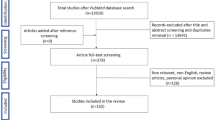Abstract
Background
Fungal keratitis is a rare but serious condition that may result in loss of vision. The potentially poor prognosis might be due to a delay in diagnosis and/or to limited treatment options. The aim of this study is to evaluate the clinical outcome of patients treated with topical fluconazole 0.2% for the treatment of filamentous fungal keratitis.
Methods
Retrospective case series. A chart review of all patients evaluated at the Ophthalmology Department of the Hospital de Clínicas in Paraguay from January 1997 to December 2000 identified 25 cases of fungal keratitis. Among these cases, one patient discontinued the treatment and another received amphotericin as the first line drug, resulting in 23 cases available for data analysis. Twelve patients were treated with topical fluconazole 0.2% alone (Group I) and 11 patients received a combination of topical fluconazole 0.2% and oral ketoconazole 200 mg twice daily (Group II).
Results
Sixteen of 23 cases showed resolution of the keratitis, 9/12 (75%) in Group I and 7/11 (64%) in Group II. Seven patients (30%) did not respond to medical treatment and required a surgical procedure to preserve eye integrity. Superficial and small ulcers have a significantly better prognosis than do lrge and deep ulcers. Concomitant oral ketoconazole (400 mg/day) did not improve the clinical results.
Conclusions
Our findings of study suggest that topical fluconazole 0.2% is a safe and effective antifungal drug for the management of filamentous mycotic keratitis, particularly in cases that are not severe. The addition of oral ketoconazole to topical fluconazole did not improve the clinical outcome.
Similar content being viewed by others
References
Alfonso E, Rosa R (1998) Fungal keratitis. In: Krachmer J et al (ed) Text horns and color atlas (on CD-ROM). Mosby, St Louis
Behrens-Baumann W (1997) Zur Diagnostik und Therapie der Pilzkeratitis. Eine Übersicht. Klin Monatsbl Augenheilkd 210:a10–a13
Chander J, Sharma A (1994) Prevalence of fungal corneal ulcers in northern India. Infection 22(3):207–209
Erie JC, Nevitt MP, Hodge DO, Ballard DJ (1993) Incidence of ulcerative keratitis in a defined population from 1950 through 1988. Arch Ophthalmol 111:1665–1671
Forster RK, Rebell G (1975) The diagnosis and management of keratomycosis. II. Medical and surgical management. Arch Ophthalmol 93:1134–1136
Freda R, Colombo TO, Acnes P, Freitas D (1998) Eficácia do fluconazol subconjuntival na ceratite experimental por Fusarium solani. Arq Bras Oftalmol 61(5):579–584
Gonzales CA, Srinivasan M, Whitcher JP, Smolin G (1996) Incidence of corneal ulceration in Madurai district, South India. Ophthalmic Epidemiol 3(3):159–166
Jones DB, Forster FK, Rebell G (1972) Fusarium solani keratitis treated with natamycin (pimaricin): eighteen consecutive cases. Arch Ophthalmol 88:147–154
Laspina F, Samudio M, Cibils D et al (2004) Epidemiological characteristics of microbiological results on patients with infectious corneal ulcers: a 13-year survey in Paraguay. Graefes Arch Clin Exp Ophthalmol 242:204–209
Liesegang T (1999) Fungal keratitis. In: Kaufman HE, Barron B, McDonald M (eds) The horns (2nd ed. on CD-ROM). Butterworth-Heinemann, Woburn
Liesegang TJ, Forster RK (1980) Spectrum of microbial keratitis in South Florida. Am J Ophthalmol 90:38–47
Maia M, Yuso Fujii G, Mioshi C et al (1997) Ceratite fúngica: Aspectos etiológicos, epidemiológicos e diagnósticos. Arq Bras Oftalmol 60(4):354
Miño de Kaspar H, Zoulek G, Paredes ME et al (1991) Mycotic keratitis in Paraguay. Mycoses 34:251–254
O’Day DM, Robinson R, Head WS (1983) Efficacy of antifungal agents in the cornea. I. A comparative study. Invest Ophthalmol Vis Sci 24:1098–1102
O’Day DM, Ray WA, Head WS, Robinson RD (1984) Influence of the corneal epithelium on the efficacy of topical antifungal agents. Invest Ophthalmol Vis Sci 25:855–859
O’Day D, Head WS, Robinson RD, Clanton JA (1986) Corneal penetration of topical amphotericin B and natamycin. Curr Eye Res 5:877–882
Poole T, Hunter D, Maliwa E, Ramsay A (2002) Aetiology of microbial keratitis in northern Tanzania. Br J Ophthalmol 86:941–942
Schwab I, Epstein R, Harris D, Pflugfelder S, Wilhelums K, Perry P (eds) (1997) Fungal keratitis. In: Basic and clinical science course, external disease and horns. American Academy of Ophthalmology, San Francisco, 1997, pp 125–126
Srinivasan M, Gonzales CA, George C et al (1997) Epidemiology and aetiological diagnosis of corneal ulceration in Madurai, south India. Br J Ophthalmol 81:965–971
Tanure MA, Cohen EJ, Sudesh S, Rapuano CJ, Laibson PR (2000) Spectrum of fungal keratitis at Wills Eye Hospital, Philadelphia, Pennsylvania. Cornea 19:307–312
Thomas P (2003) Current perspective on ophthalmic mycoses. Clin Microbiol Rev 16(4):730–797
Urbak SF, Degn T (1994) Fluconazole in the management of fungal ocular infections. Ophthalmologica 208:147–156
Vemuganti GK, Garg P, Gopinathan U et al (2002) Evaluation of agent and host factors in progression of mycotic keratitis: a histologic and microbiologic study of 167 corneal buttons. Ophthalmology 109:1538–1546
Wilson THE, Ajello L (1998) Agents of oculomycoses: fungal infections of the eye. In: Topley & Wilson’s microbiology and microbial infections, 9th edn. Arnold, London, pp 525–567
Xie L, Dong X, Shi W (2001) Treatment of fungal keratitis by penetrating keratoplasty. Br J Ophthalmol 85:1070–1074
Acknowledgements
The authors thank the Georg and Hannelore Zimmermann Foundation, Munich, Germany and the Department of Ophthalmology at the Ludwig Maximilians University, Munich, Germany for financial and technical support of this study.
Author information
Authors and Affiliations
Corresponding author
Additional information
None of the authors has any financial interest in the materials used on this study.
Rights and permissions
About this article
Cite this article
Sonego-Krone, S., Sanchez-Di Martino, D., Ayala-Lugo, R. et al. Clinical results of topical fluconazole for the treatment of filamentous fungal keratitis. Graefe's Arch Clin Exp Ophthalmo 244, 782–787 (2006). https://doi.org/10.1007/s00417-005-1127-8
Received:
Revised:
Accepted:
Published:
Issue Date:
DOI: https://doi.org/10.1007/s00417-005-1127-8




